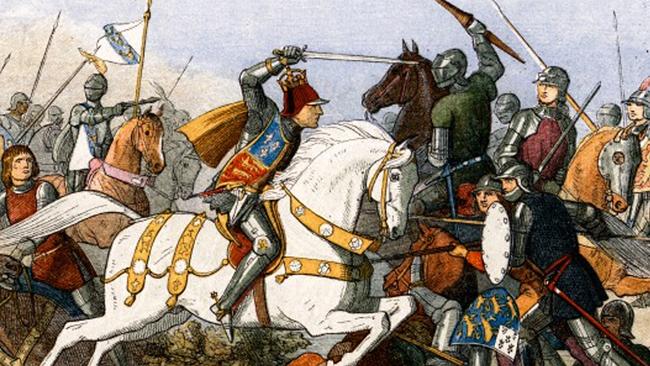"It is an extremely rare occurrence that archaeologists are involved in the excavation of a known individual, let alone a king of England," said King.
"Sequencing the genome of Richard III is a hugely important project that will help to teach us not only about him, but ferment discussion about how our DNA informs our sense of identity, our past and our future," she added.
The year-long project, which will attempt to extract DNA from ground-up samples of Richard's bones, could reveal the controversial leader's hair and eye colour, and whether the scoliosis that deformed his spine was genetic.
Geneticist and co-funder Alec Jeffreys pitched the idea to King over dinner.
"We will never have this chance again, wherever he ends up being buried and whenever it ends up happening," King said. "We have this unique opportunity now and it seemed a shame not to do it."
The skeleton was found during an archaeological dig at a municipal car park in Leicester, central England, in August 2012.
DNA from the bones matched that of descendants of the king's sister, while the skeleton had the twisted spine and battle injuries consistent with contemporary accounts, said researchers from the University of Leicester.
After his death at the Battle of Bosworth, near Leicester, Richard's body was buried by Franciscan friars, known as Greyfriars, in an unmarked grave. When their monastery was destroyed in the 1530s, all traces of him disappeared.
In "Richard III", Shakespeare described a villain who murdered his two young nephews to win the throne.
Enthusiasts say there is no evidence he killed the young boys, and hope the focus will now shift to the social reforms Richard introduced.
A court battle is ongoing to decide whether his remains should eventually be buried in the nearby Leicester Cathedral, or in York, his royal house.
----------------------------------------------------------------------
"Sequencing the genome of Richard III is a hugely important project that will help to teach us not only about him, but ferment discussion about how our DNA informs our sense of identity, our past and our future," she added.
The year-long project, which will attempt to extract DNA from ground-up samples of Richard's bones, could reveal the controversial leader's hair and eye colour, and whether the scoliosis that deformed his spine was genetic.
Geneticist and co-funder Alec Jeffreys pitched the idea to King over dinner.
"We will never have this chance again, wherever he ends up being buried and whenever it ends up happening," King said. "We have this unique opportunity now and it seemed a shame not to do it."
The skeleton was found during an archaeological dig at a municipal car park in Leicester, central England, in August 2012.
DNA from the bones matched that of descendants of the king's sister, while the skeleton had the twisted spine and battle injuries consistent with contemporary accounts, said researchers from the University of Leicester.
After his death at the Battle of Bosworth, near Leicester, Richard's body was buried by Franciscan friars, known as Greyfriars, in an unmarked grave. When their monastery was destroyed in the 1530s, all traces of him disappeared.
In "Richard III", Shakespeare described a villain who murdered his two young nephews to win the throne.
Enthusiasts say there is no evidence he killed the young boys, and hope the focus will now shift to the social reforms Richard introduced.
A court battle is ongoing to decide whether his remains should eventually be buried in the nearby Leicester Cathedral, or in York, his royal house.
----------------------------------------------------------------------









 Home
Home Politics
Politics











